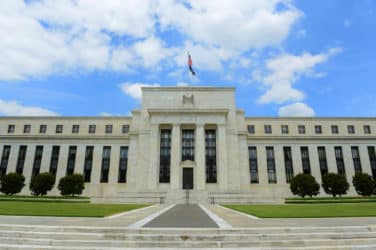McKinsey’s Global Banking & Securities practice has today released its annual flagship report, the global banking annual review, this year titled: The last pit stop? Time for bold late-cycle moves.
McKinsey suggests the banking industry is approaching the end of the current economic cycle in less-than-ideal health. Nearly 60 percent of banks are not generating the cost of capital/trading below book. Growth in volumes and topline revenues is slowing with loan growth of just four percent in 2017/18 – the lowest in the past five years and a good 150 bps below nominal GDP growth. Yield curves are also flattening. And, though valuations fluctuate, investor confidence in banks is weakening once again. All the while, the digital disruption of the entire industry continues unabated.
This health report despite the fact that global employment is at full and cost of risk is at its lowest in the developed world. Given indications that the economic situation is likely to worsen in the coming period, banks globally are approaching the last likely pitstop in this economic cycle to rapidly reinvent business models and scale up inorganically.
Chira Barua, London-based McKinsey Partner and report co-author said:
“Given where many players in the banking industry are today, a serious downturn could be catastrophic for many. This is a ‘do or die’ moment. Whilst imaginative institutions are likely to come out leaders in the next cycle, others risk becoming footnotes to history. However, there are steps every bank can take today to change their fortunes and begin the next cycle on a stronger footing, but time is running out. Boards and management should actively consider strategic moves now instead of the cycle forcing it on them in a downturn.”
Kausik Rajgopal, Silicon Valley-based McKinsey Senior Partner and report co-author said:
“All banks can make bold moves now to prepare for any downturn and improve their fortunes in the next cycle. However, understanding the factors that distinguish between the world’s highest and lowest performing players is crucial. The report identifies four distinct archetypes, which banks around the world would broadly associate with based on the strength of the individual franchise and the constraints of its markets or business model: ‘market leaders’, ‘resilients’, ‘followers’ and ‘the challenged’. While all banks have common actions they can take, each bank archetype has their own specific late cycle priorities to act upon.”
Examples of priorities include ramping up new AI based ‘new risk’ management, radically disrupting cost structures by industrializing non-differentiating activities and identifying unique customer bases for generating growth– all the while building new digital talent and advanced data analytics infrastructure to effectively compete.
McKinsey’s four late cycle bank archetypes:
1. Market leaders. Represent just over 20% of banks globally and capture almost 100 percent of the economic value added by the entire industry Imperative: Reinvest capital and resources to invest intelligently in innovation and further scale for the next cycle.
2. Resilients. Nearly 25% of banks have maintained leadership in challenging markets, including many in Europe. Imperative: focus on expanding beyond their direct set of customers and products through ecosystem plays and innovation / for leading broker dealers, time to rethink business model to where they add value.
3. Followers. About 20% of banks have not achieved scale, and are weaker than peers, despite favorable market dynamics. Imperative: act promptly to build scale where they are best at and radically cut costs.
4. Challenged banks. Just over 35% of banks globally are both sub-scale and suffer from unfavorable markets. Imperative: urgency is acute. To survive a downturn, inorganic options seems to be the only game in town.
The report looks in detail at bold and yet practical levers to materially improve performance and invest for the next cycle; especially those than can be executed within the short span of two to three years that a late cycle typically offers.
Source: McKinsey






